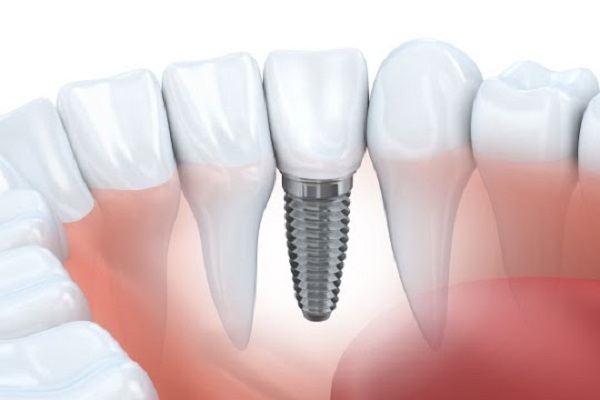Ask an Implant Periodontist About Implants, Gum Tissue and Jawbone

Individuals who have lost a permanent tooth to injury or disease are typically looking for replacement options. An implant periodontist can talk to patients about dental implants and the gum and jawbone requirements for supporting this solution.
4 questions to ask about implants
In addition to being cosmetically damaging, missing teeth can harm the surrounding gum tissue and jawbone. Thus, replacing missing teeth is important for maintaining normal function. Here are some questions to ask a dental professional about this procedure.
1. What is an implant?
A dental implant is an artificial tooth root, often called a post, that is made out of metal such as titanium. The post is surgically placed into the upper or lower jawbone, and then a bridge or replacement tooth is attached. The most common type of implant is called endosteal and it is located in the bone. Another less common type, subperiosteal, is placed on the bone.
2. How does the condition of the gum tissue and jawbone affect implant candidacy?
Several factors influence whether an implant is an option for a patient. First, candidates should have healthy gum tissue to support a successful implant. Any form of gum disease results in weakening and dissolving of gum tissue and bone and are detrimental to an implant's stability.
The density of the jawbone is also a critical component because the metal post fuses with the bone. The jawbone needs to be fully developed as well as deep, wide, and strong enough to support the post. If a person has any type of disease that affects bone healing, it is critical to discuss this with an implant periodontist.
Finally, individuals should have good general and oral health. Some people with chronic illnesses may not be candidates because the body cannot support proper healing following surgery. Overall health is often a more important factor than age.
3. What is the procedure to place implants in the jawbone?
Placing an endosteal implant typically takes two or three phases. The first phase involves surgically inserting the metal post into the jawbone. The second phase is called osseointegration and involves the implant and jawbone fusing together.
Some patients can have a replacement tooth placed the same day of the surgery, while other patients need to wait several weeks or months for this fusion to complete. In this case, the final phase is placing the artificial tooth or teeth. A single lost tooth is replaced with a dental crown, while multiple teeth are replaced with dental bridges or dentures.
4. What are ways to keep the implant and gum tissue healthy?
To help implants last longer, dental experts recommend that patients practice good oral hygiene. Artificial teeth need to be taken care of just like natural teeth, and good brushing and flossing habits are essential. Individuals should visit a dentist regularly for checkups and regular cleaning. Lastly, avoid damaging habits such as smoking, chewing on ice and hard candy, and grinding teeth.
Conclusion
An individual who is considering dental implants should visit an implant periodontist to have their questions answered. A thorough exam and consultation allow a dental professional to determine if this procedure is right for the patient.
Request an appointment here: https://smilewellsouthbay.com or call SmileWell Family Dentistry at (310) 904-6375 for an appointment in our Torrance office.
Check out what others are saying about our dental services on Yelp: Periodontal Test in Torrance, CA.
Recent Posts
Dentists recommend proper oral hygiene from a young age to achieve good dental health for a lifetime. This is important for cosmetic reasons, but also to maintain overall health. One of the consequences of not brushing and flossing correctly is gum disease, which is also known as periodontal disease. This condition originally affects the gums,…
Periodontal disease, or gum disease, can be incredibly concerning and lead to other, more severe oral health issues if left untreated for an extended amount of time. Consequently, it is important to fully understand the various signs and symptoms of periodontal disease in order to be able to spot periodontal disease as soon as it…
Gum contouring or gum reshaping are other names for a receding gum lift, and this procedure, completed by a periodontist, restores a person's gumline to cover the tooth adequately. The process is usually recommended by a dental specialist if a person has suffered significant gum recession that has nearly exposed the tooth's root.When gum coverage…
Periodontics focuses on diagnosing and treating gum disease. Gingivitis is the first stage of gum disease, and it often leads to symptoms like receding, tender, and inflamed gum tissues.Gum disease, also known as periodontal disease, is caused by oral bacteria infecting the gum tissues. This occurs when plaque and tartar made by oral bacteria start…


